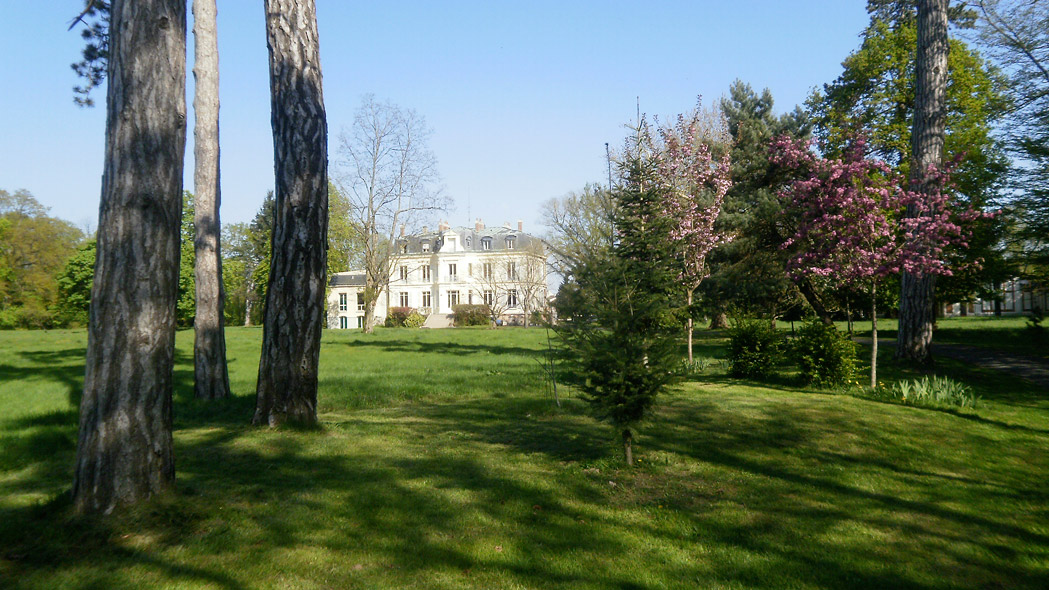
LIFE AT THE VEDANTIC CENTRE
The Vedantic Centre is an ashram, that is, a spiritual community gathered around a monk chosen by his peers for his experience in meditation and spiritual guidance.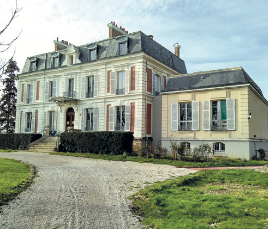 Daily tasks support the welcoming of visitors (maintenance of the buildings and grounds, housework, etc.) and are mainly carried out by volunteers who live at the Centre and are committed solely to serving their ideal, their fellow beings, and the ashram.
Daily tasks support the welcoming of visitors (maintenance of the buildings and grounds, housework, etc.) and are mainly carried out by volunteers who live at the Centre and are committed solely to serving their ideal, their fellow beings, and the ashram.
Since the Centre is an ashram, major Hindu religious festivals are celebrated here, and since it is Vedantic, the birthdays of great spiritual masters (Buddha, Jesus, etc.) are also observed. For the same reason, other world religious traditions are studied alongside Indian Scriptures.
Our visitors come from all walks of life and for various reasons. They come from Paris or its region, from the provinces; from Europe, Africa, the Americas, or Asia. They come for ceremonies and festivals or for lectures, to see the Swami or for the community life, for the Hindu character of the Centre or for its interfaith mission. Life at the ashram is paced by spiritual activities, daily work, and meals.
TYPICAL WEEKEND FROM SEPTEMBER TO JUNE
Here are the main schedules. It is necessary to send an email to book meals. All activities are free to attend; a contribution of 14€ is requested for meals.
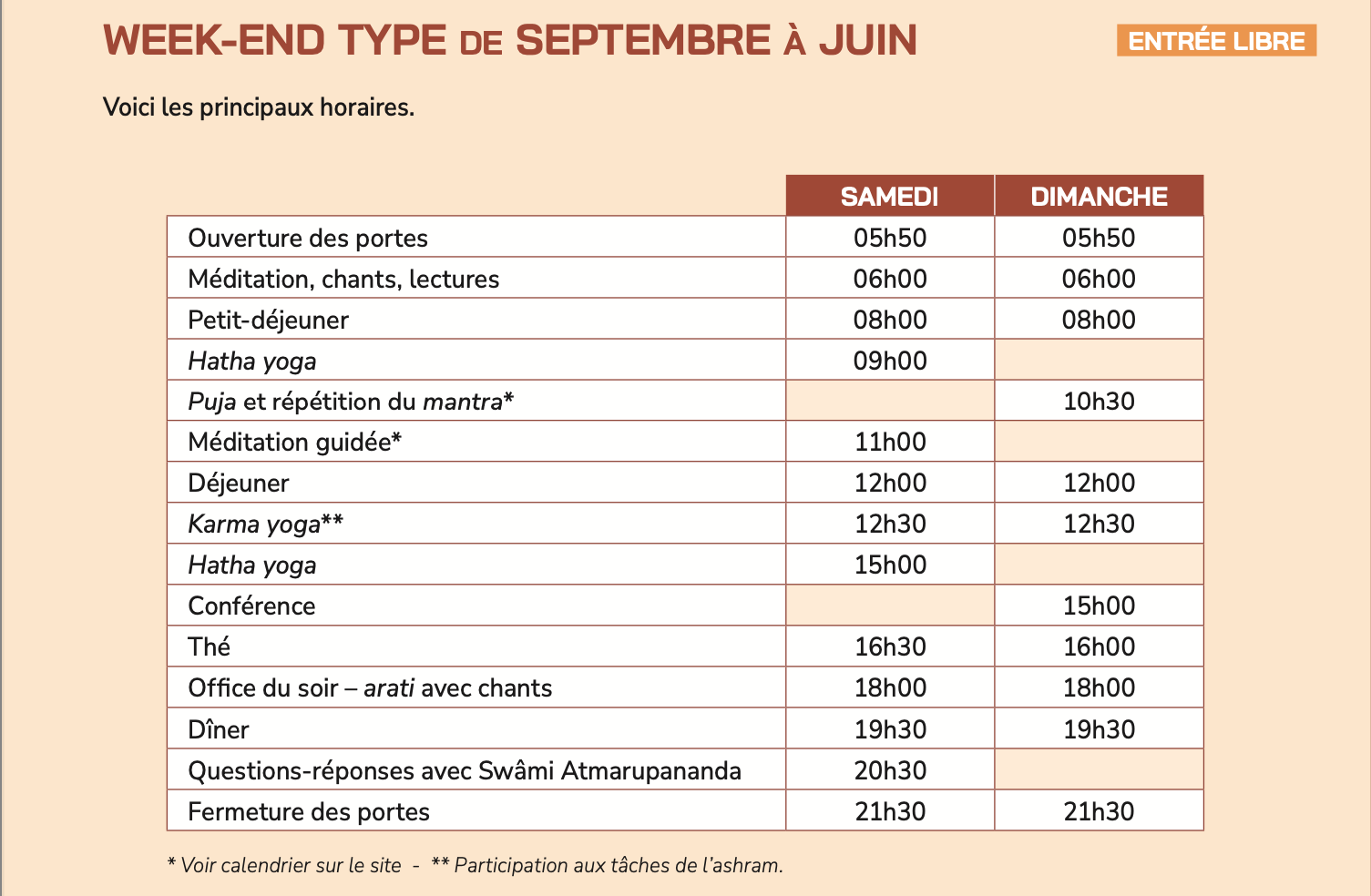
FOOD AT THE CENTRE
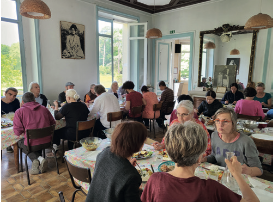
Born from solar energy inspired by the Infinite,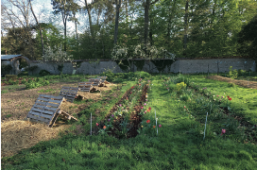
food brings joy and energy to the body and mind.
Cooking and meals can also be a form of prayer or meditation.
Our meals are free of meat, fish, and alcohol. They blend flavors from Eastern and Western worlds. The orchard and vegetable garden provide some of our fruits and vegetables, the cows give us milk and dairy products, and our beehives produce honey.
THE MAIN HOUSE AND THE PARK
Both entrances to the property lead to the main house, where visitors engage with most of the Centre’s activities: here is the chapel for meditation and prayer; beneath it, the Sarada Devi hall and a space for Ayurvedic practices; next to the chapel, a lounge where people gather in the evening for readings or discussions; in the hall, behind the reception desk, is a bookshop; and beyond the hall, to the right, the kitchen and dining room overlook a pasture area for the cows, which occupy most of the Centre’s fifteen hectares. At the far end of this meadow stands a kiosk with an octagonal roof topped by Shiva’s crescent.
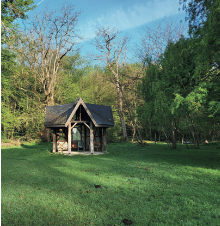 The stained-glass windows of its rotunda illustrate two aphorisms: "When I know I am everything, that is knowledge," "When I know I am nothing, that is love."
The stained-glass windows of its rotunda illustrate two aphorisms: "When I know I am everything, that is knowledge," "When I know I am nothing, that is love."
To the right of the kiosk, a wooded path filled with birdsong leads to the largest pasture for the cows. Those who accompany them find here an ideal place to gaze at the starry sky or the golden sunrise. Deer have also grown accustomed to seeking refuge here.
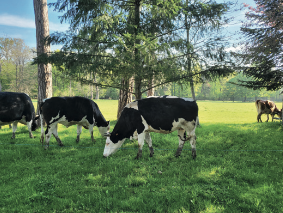
Retracing our steps to Sarada Mandir (the two-storey building to the left of the kiosk), we can admire the flower garden, a reflection of the sky and a skillful labor. A greenhouse stands next to it, used to prepare and protect flowers for offerings.
Taking the path along the greenhouse, we see to the right a gate leading to Yatiswarananda House and another wooded area. Further along is a barn used as a workshop. Opposite, a gate leads into the walled vegetable garden, centered around a well, crossed by paths and adorned with a pond where lotuses rest and little goldfish swim, seemingly enchanted by Krishna’s flute watching over the water. Another entrance to the garden, next to the beehives, leads to the stable where our peaceful cows and lively summer guests, the swallows, reside.
With luck, there might be a calf or a young heifer, always a delight for children, who also love watching the milking. A third gate from the garden opens onto Brahmananda Bhavan, the guest house for visitors, parallel to boulevard Victor Hugo. Before ending our walk, we can follow the wall on the right to visit the orchard.



